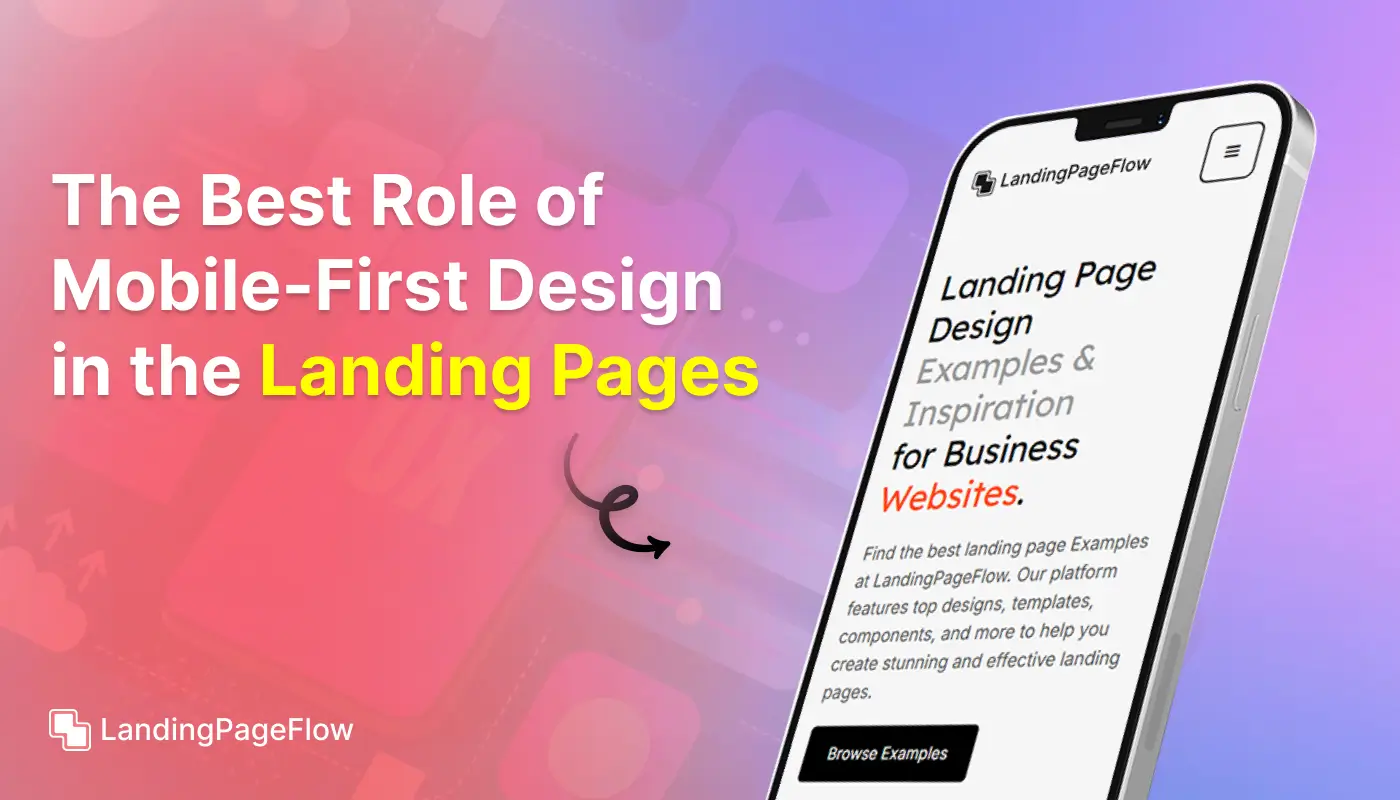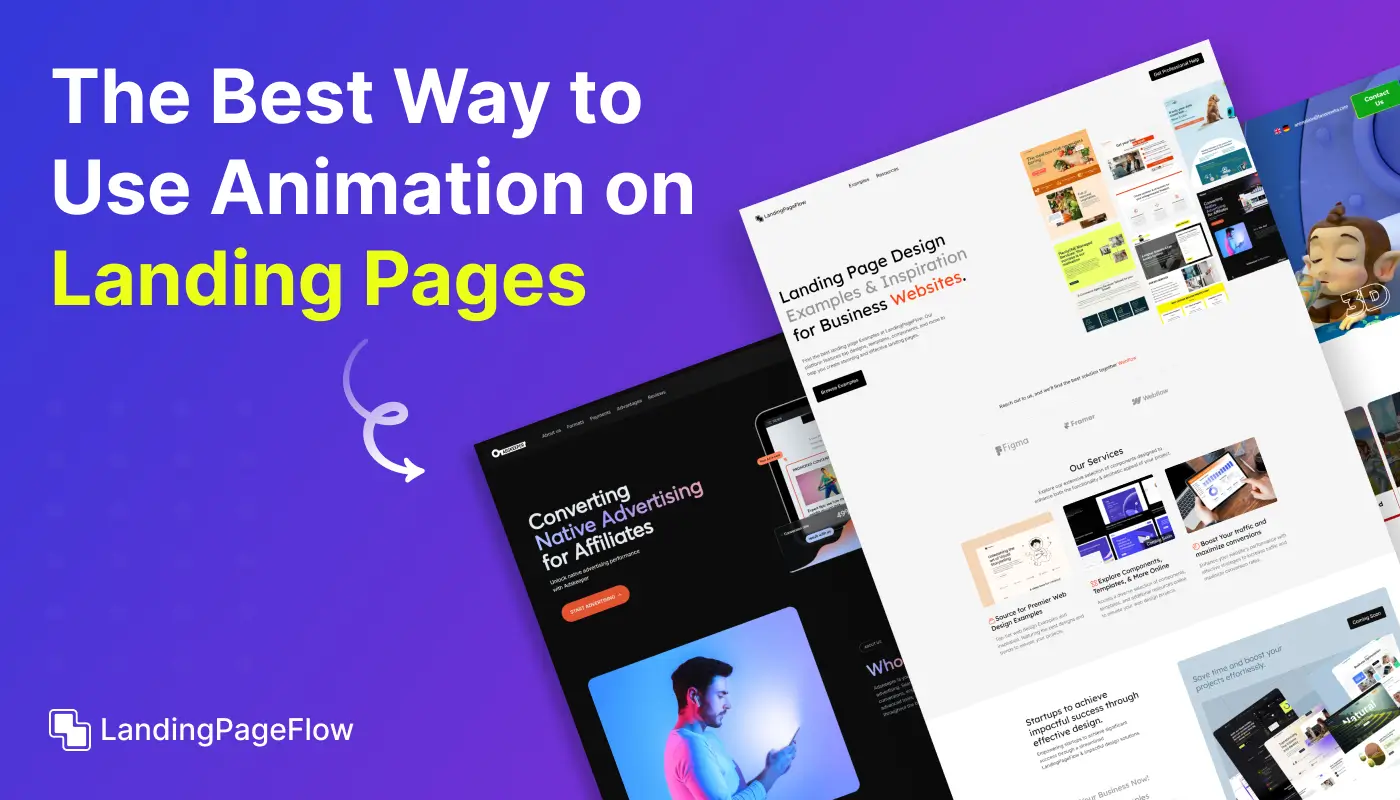Boost Your Sales with Mobile-First Landing Page Designs

November 18, 2025
Smart businesses recognize that most users now access websites through mobile devices, making mobile-first design a necessity rather than an option. Creating landing pages tailored to mobile browsing ensures seamless interaction and faster engagement for every visitor.
Design elements need to be simplified for quick scanning, helping users focus only on the most important actions you want them to take.
Strong visuals, easy navigation, and responsive structures are all essential for capturing user attention in just a few seconds. Typography, buttons, and CTAs need to be optimized for thumb-friendly usage, ensuring the experience feels natural.
Businesses aiming to boost revenue must also pay attention to speed, since every second of delay reduces conversion chances significantly. Mobile-first design enhances performance and ensures your landing page never loses a prospect to frustration.
Engagement comes from clarity, simplicity, and a customer-focused approach that speaks directly to user needs.
"Ready to boost sign-ups instantly?
Download your free guide today & optimize your mobile success."
Table of Contents
- What is a Mobile-First Landing Page Design?
- Why Mobile-First Design Matters For Sales?
- Key Elements of a Mobile-First Landing Page
- Best Practices For Mobile Landing Pages
- Tools to Build Mobile-First Landing Pages
- Examples of Successful Mobile-First Landing Pages
1. What is a Mobile-First Landing Page Design?

A mobile-first landing page design focuses on prioritizing the mobile user experience.
Instead of starting with desktop designs and scaling down for smartphones, the mobile-first design ensures the page is fully optimized for mobile devices from the start.
This approach makes sure that key elements like buttons, text, and images are easily accessible on smaller screens.
2. Why Mobile-First Design Matters For Sales?

- Mobile Traffic Dominance: A large percentage of web traffic now comes from mobile devices, meaning a poor mobile experience can cost you potential customers.
- Faster Loading Times: Mobile-first pages are lightweight and load faster, which improves user satisfaction and reduces abandonment rates.
- Improved SEO: Google prioritizes mobile-friendly websites in search results, helping your page rank higher and drive organic traffic.
- Increased Conversions: A smooth and responsive experience helps engage visitors, leading to more conversions and ultimately higher sales.
3. Key Elements of a Mobile-First Landing Page

Simple and Clear Headline
Use a short and impactful headline to communicate your value proposition instantly. Mobile users scroll quickly, so clarity is key.
Compact Call-to-Actions (CTAs)
- Keep CTAs visible and accessible, such as sticky buttons at the bottom of the screen.
- Use action-driven language like “Buy Now” or “Claim Offer.”
Minimalistic Navigation
Limit distractions by removing unnecessary navigation elements. The goal is to keep the visitor focused on taking action.
Mobile-Friendly Forms
- Use short, easy-to-fill forms with minimal fields.
- Enable autofill options to save users time during checkout or sign-up.
Optimized Images and Videos
Use compressed images and mobile-friendly video players to maintain fast loading times. Avoid heavy files that may slow down performance.
4. Best Practices For Mobile Landing Pages

Prioritize Speed
- Compress files and use lazy loading for images.
- Ensure your page loads in under 3 seconds to reduce bounce rates.
Design for Thumb-Friendly Navigation
- Place buttons and links within easy reach of the thumb for better usability.
- Use large, tappable buttons for CTAs.
Use Short, Concise Copy
Mobile users skim content, so keep your messaging brief and impactful. Use bullet points to highlight key benefits and features.
Test Across Devices and Browsers
Ensure your page looks and functions perfectly on various devices and browsers. Tools like BrowserStack can help with cross-device testing.
Enable Mobile Payment Options
Offer mobile-friendly payment methods like Apple Pay or Google Pay to streamline the checkout process.
5. Tools to Build Mobile-First Landing Pages

- Mailchimp: Simple drag-and-drop editor with mobile preview.
- Unbounce: Allows you to build responsive landing pages with A/B testing features.
- Elementor: WordPress plugin with customizable mobile templates.
- Webflow: Advanced tool for building responsive, mobile-friendly websites.
- Canva: Provides easy-to-use templates optimized for mobile devices.
6. Examples of Successful Mobile-First Landing Pages

1. Airbnb
- Features large, tappable buttons and a minimalist design.
- Quick booking process optimized for mobile users.
2. Uber
- Compact sign-up forms and thumb-friendly CTAs for new users.
- Loads fast and highlights core services.
3. Shopify
- Uses concise messaging and mobile-friendly imagery.
- Offers mobile payment options for a smooth experience.
Conclusion
Sales-driven strategies start with understanding how users interact on smaller screens and adapting your design accordingly. A mobile-first landing page ensures that potential customers encounter no barriers to engagement or action.
Mobile-first practices allow businesses to simplify user journeys, making it effortless for visitors to sign up, purchase, or explore services. Clean structures paired with fast performance create trust and reduce bounce rates.
Every element on the page, from imagery to copy, must support clarity and focus. When friction is removed from the process, users are far more likely to complete the intended action.
Brand loyalty strengthens when people can browse, shop, and sign up without disruptions or poor usability. A mobile-first mindset ultimately positions your business to thrive in a competitive digital space.

FAQ
1. Why is mobile-first design so important for landing pages?
Most users access websites via mobile devices, making mobile-first design essential for better engagement, smoother navigation, and higher conversions.
2. How does a mobile-first landing page improve sales?
By focusing on speed, clarity, and simplified navigation, mobile-first landing pages reduce friction and encourage visitors to take action quickly.
3. What elements should every mobile-first landing page include?
Key elements include concise headlines, thumb-friendly CTAs, responsive layouts, optimized images, and clear user pathways.
4. Does mobile-first design impact SEO rankings?
Yes, search engines prioritize mobile-optimized websites, meaning a mobile-first landing page can improve both visibility and organic traffic.
5. How can I test if my landing page is mobile-friendly?
You can use tools like Google’s Mobile-Friendly Test, check responsiveness across devices, and monitor page speed to ensure usability.
6. Can mobile-first design work for all industries?
Absolutely. Whether for e-commerce, SaaS, or service-based businesses, mobile-first landing pages improve engagement and boost overall conversions.



















